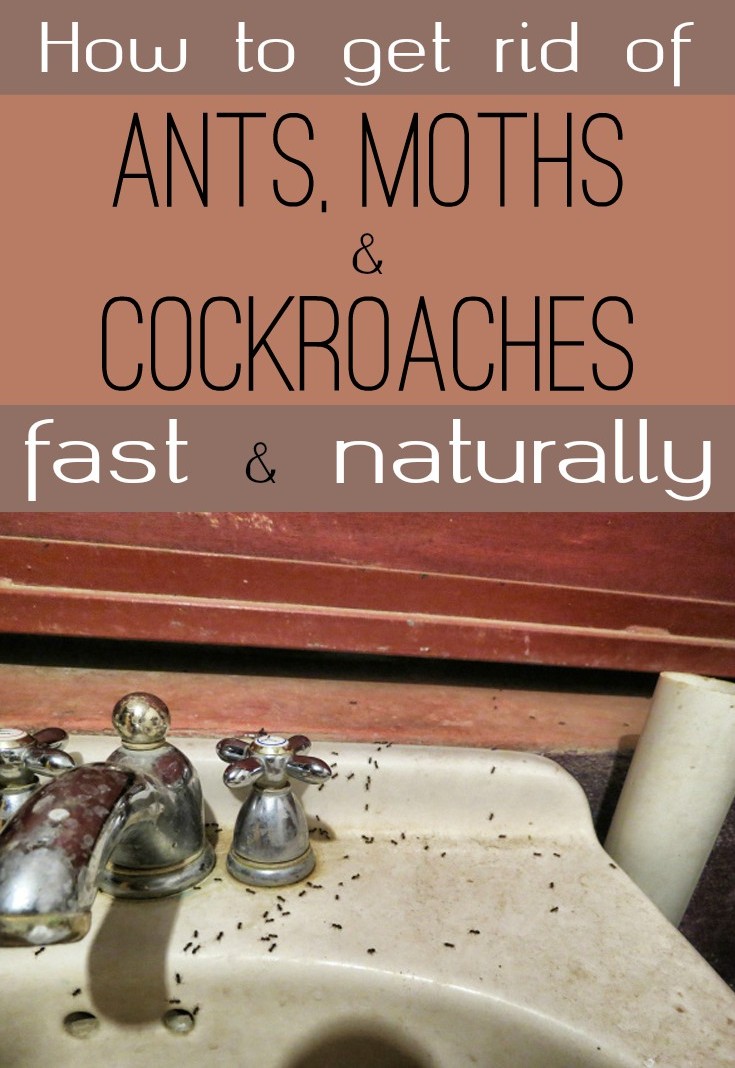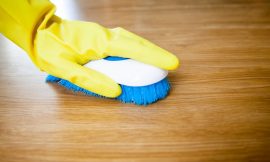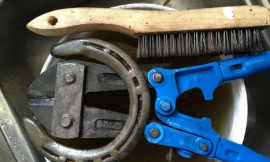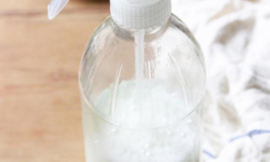The first general rule to get rid of insects is to block their access routes to your home; fill the cracks, use repellents (liquid or solids which, because of their organoleptic properties, they remove the unwanted insects without harming them), mount nets and make sure you don’t bring stowaways in your home. If they manage to enter your home, most of them can be caught quite easily with baits such as their favorite food or specific odors (pheromones).
Ants
It’s an unavoidable fact: ants, in their search of sugar, manage to enter your home through the smallest cracks. Once they found crumbs or spilled food, they notify the colony and in a blink of an eye they create a two-way highway full of ants carrying your leftovers to the anthill.
You can reduce the risk of being the victim of an ant infestation if you wash immediately anything that flows and if you keep the food in tightly closed containers. Stop any cracks around entrances and sprinkle dried mint, cinnamon or cloves. Also, wash often the surface that has been populated by ants in order to erase the traces they leave (so they can’t guide the other anthill members to the food).
If you fail to put an end to the invasion, use a paste made of borax and sugar to stop the ants exodus. Borax is quite safe for humans, but when the ants carry it in the colony, it will kill them all. Mix a tablespoon of borax or boric acid with a tablespoon of sugar or honey and add water until you get a paste, then put the mixture into a small jar in the areas where you see ants. Refill it as many times as needed until they go away.
Pantry moths
If you notice small moths, gray-brownish buzzing in the house or you find fabrics inside the food containers, this means you have pantry moths. The black or brown bugs from the wheat or other grain products are called pantry moths. The first action against moths is to put the infested containers in the freezer for 1-2 days. Then throw all the contaminated food outside in the garbage container. Check all food containers and get rid of all insects. If you don’t want to throw away food that was slightly affected – store it in the freezer.
The little uninvited guests can get into the house through the food you just bought (including pet foods), so buy only airtight containers and attend only stores with clean shelves and a lot of customers, where food is bought quickly. Store the food in containers or glass jars (plastic bags will not keep out insects for a long time) or store last-minute shopping in the freezer for a few days to kill any adult insects that may be hiding inside (eggs die in about 1 month).
Regarding the moths that already fly free around the house, you’ll have to work a little more in order to get rid of them. Clean any spilled food and make sure that foods are hermetically sealed. Put a bay leaf in each container; this will keep away the pests without harming you.
If the pantry moths problem is more serious, buy pheromone traps to reduce their population.
Clothes moths
Moths who hang out away from the pantry are known as clothes moths. They eat wool (clothes, blankets, rugs), fur and more. Vacuuming every nook and wardrobe and office helps eradicate them. Sinking wool objects in hot water (50 ° C for 20-30 min) will destroy the moths and their eggs. Keep woolen clothes in bags to keep the moths away when you’re not wearing them.
Pouches with lavender, rosemary or cedar chips keep moths away, but should be replaced at least annually. Cedar cupboards and chests look good, but don’t count on them to get rid of moths after the first two years of use. Avoid naphthalene balls because they are toxic to humans and animals. You can buy pheromone traps to eradicate the moths and keep one for to alert you when these problems arise again.
Cockroaches
Cockroaches are the most frequent uninvited guests. If you don’t own a domestic population, you can import them without knowing in boxes or items that are being stored in an infested house. Cockroaches often hide inside electronics and come out of those housing to inspect your home.
Because they can spread diseases and can worsen allergies, it’s important keeping these insects under control, but don’t resort to toxic substances. Use the mixture made of borax and sugar mentioned above, or prepare another non-toxic insecticide against cockroaches made of sugar, flour, baking soda, vegetable fat, chopped onion and water. Mix them until you get thick paste and shape it into balls. Place this paste in areas where you see cockroaches. After being eaten, these balls explode inside the insects and killing them.







